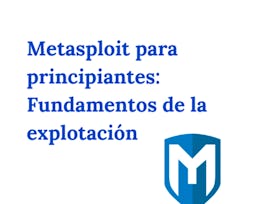In this course, you will learn what an argument is. The definition of argument will enable you to identify when speakers are giving arguments and when they are not. Next, you will learn how to break an argument into its essential parts, how to put them in order to reveal their connections, and how to fill in gaps in an argument by adding suppressed premises. By the end of this course, you will be better able to understand and appreciate arguments that you and other people present.



Think Again I: How to Understand Arguments
This course is part of Introduction to Logic and Critical Thinking Specialization


Instructors: Dr. Walter Sinnott-Armstrong
Sponsored by Mojatu Foundation
317,857 already enrolled
(2,974 reviews)
Details to know

Add to your LinkedIn profile
29 assignments
See how employees at top companies are mastering in-demand skills

Build your subject-matter expertise
- Learn new concepts from industry experts
- Gain a foundational understanding of a subject or tool
- Develop job-relevant skills with hands-on projects
- Earn a shareable career certificate


Earn a career certificate
Add this credential to your LinkedIn profile, resume, or CV
Share it on social media and in your performance review

There are 5 modules in this course
Welcome to our specialization Introduction to Logic and Critical Thinking based on our Coursera course Think Again: How to Reason and Argue. This course-Think Again: How to Understand Arguments - is the first in a series of four courses. We are excited that you are taking this course, and we hope that you will stick around for all four courses in the series, because there is a great deal of important material to learn. In the series as a whole, you will learn how to analyze and evaluate arguments and how to avoid common mistakes in reasoning. These important skills will be useful to you in deciding what to believe and what to do in all areas of your life. We will also have plenty of fun. The first part of this course introduces the specialization and the course. It also clarifies some peculiarities you may find with this course. We encourage you to watch the "Introduction to the Specialization" video first as it will help you learn more from the materials that come later.
What's included
1 video1 reading
In this module's material we will teach you how to identify arguments as opposed to abuse . We will define what an argument is, distinguish various purposes for which arguments are given (including persuasion, justification, and explanation), and discuss the material out of which arguments are made (language). The last three lectures this module are optional, but they are recommended for advanced students. LEARNING OUTCOMES: By the end of this module's material, you will be able to :define what an argument ispull arguments out of larger texts distinguish various purposes of arguments. OPTIONAL READING: If you want more examples or more detailed discussions of these topics, we recommend Understanding Arguments, Ninth Edition, Chapters 1-2.
What's included
10 videos2 readings10 assignments12 discussion prompts1 plugin
This module's material will focus on the special language in which arguments are formulated. We will investigate the functions of particular words, including premise and conclusion markers plus assuring, guarding, discounting, and evaluative terms. Identifying these words will enable students to separate arguments from the irrelevant verbiage that surrounds it and then to break the argument into parts and to identify what each part of an argument is doing. The lectures end with a detailed example that uses these tools to closely analyze an op-ed from a newspaper. LEARNING OUTCOMES: By the end of this module's material, you will be able to: understand three levels of meaning. identify argument markers OPTIONAL READING: If you want more examples or more detailed discussions of these topics, we recommend Understanding Arguments, Ninth Edition, Chapters 3-4.
What's included
10 videos9 assignments8 discussion prompts
This module's material will teach you how to organize the parts of an argument in order to show how they fit into a structure of reasoning. The goal is to make the argument look as good as possible so that you can learn from it. We work through the main steps of reconstruction, including putting the premises and conclusion into a standard form, clarifying the premises and breaking them into parts, arranging the argument into stages or sub-arguments, adding suppressed premises where needed to make the argument valid, and assessing the argument for soundness. The lectures begin by defining the crucial notions of validity, soundness, and standard form. You will also learn to diagram alternative argument structures, including linear, branching, and joint structures. LEARNING OUTCOMES: By the end of this module's material, you will be able to: label assuring, guarding, discounting, and evaluative terms determine whether an argument is valid or sound complete arguments by adding suppressed premises reconstruct arguments by and series of arguments, and classify argument structures. OPTIONAL READING: If you want more examples or more detailed discussions of these topics, we recommend Understanding Arguments, Ninth Edition, Chapter 5.
What's included
11 videos9 assignments6 discussion prompts
This module gives you time to catch up and review, because we realize that the previous module's include a great deal of challenging material. It will also be provide enough time to take the final quiz as often as you want, with different questions each time. We explain the answers in each exam so that you can learn more and do better when you try the exam again. You may take the quiz as many times as you want in order to learn more and do better, with different questions each time. You will be able to retake the quiz three times every eight hours. You might not need to take more than one version of the exam if you do well enough on your first try. That is up to you. However many versions you take, we hope that all of the exams will provide additional learning experiences.
What's included
1 assignment
Instructors


Offered by
Why people choose Coursera for their career




Learner reviews
2,974 reviews
- 5 stars
74.57%
- 4 stars
18.93%
- 3 stars
3.96%
- 2 stars
0.90%
- 1 star
1.61%
Showing 3 of 2974
Reviewed on Sep 23, 2022
Great course, I learned a lot from it especially deep analysis, checking arguments and rebuilding, Thank you very much, great presentation from the professor Walter Sinnott-Armstrong
Reviewed on Jun 16, 2021
Not a bad course at all! Even though I didn't pay for the course, I still very much came away from it learning something. The proff is very easy to understand and makes it interesting.
Reviewed on Nov 2, 2019
Excellent course, extremely worthwhile and very challenging for me. I used this course to help with my logic training for LSAT. I will be continuing on to complete all parts of the full course.
Recommended if you're interested in Arts and Humanities

Coursera Project Network

Berklee

University of California San Diego

Open new doors with Coursera Plus
Unlimited access to 10,000+ world-class courses, hands-on projects, and job-ready certificate programs - all included in your subscription
Advance your career with an online degree
Earn a degree from world-class universities - 100% online
Join over 3,400 global companies that choose Coursera for Business
Upskill your employees to excel in the digital economy



